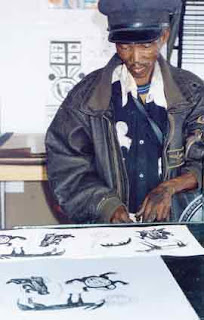


"Claire Watson received a BFA from the University of Texas at Austin, and an MFA from Tyler School of Art at Temple University in Rome and Philadelphia.
With Kid Gloves (2001-2007)This series was created from a collection of ladies gloves. The gloves suggest to me the body (its fragility); preoccupations with revealing or containing it; and escape through role-playing and costume. They are altered, hand-sewn, fitted with skeletal wire armatures, and stuffed with sawdust to become discrete objects. Some incorporate doll parts or doll making techniques. In un-making them, I think of women's traditions of handwork, particularly in long hours of sewing, but they are also reminiscent of doll-things or toys.
Familiars (2008)In this series, I've combined wooden kitchen implements and sewing tools with a translucent "flesh-colored" doll maker's clay. I'm interested in manifestations of the human form in everyday objects that are designed to be grasped or touched. The objects are given clay features that are modeled and then scarred or partially erased. They have been aged, but they have also been diverted from their forgotten intended necessity to the more sensual realm of play. Part tools, part playthings of domesticity, they are the familiars and the relics of a scarcely remembered feminine past."
Source: http://www.clairewatsonart.com/














